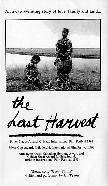
The Last Harvest.
Harvest Productions, 1994. VHS, 48 minutes.
Distributed by Moving Images Distribution
606-402 West Pender St., Vancouver, BC, V6B 1T6.
Voice/fax: (800) 684-3014.
Grades 9 - 13 / Ages 13 - Adult
Review by Duncan Thornton


